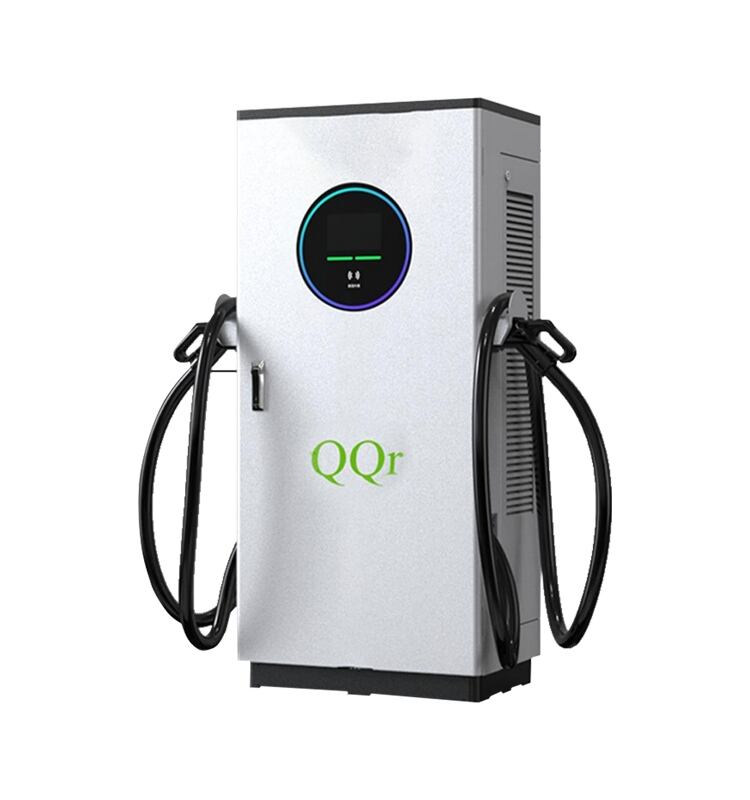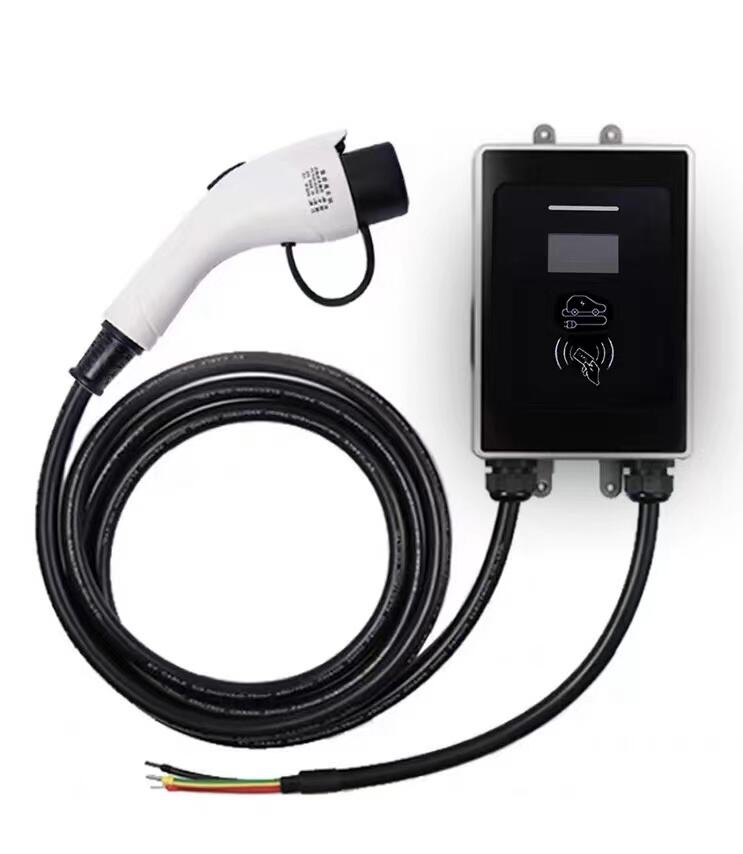The Advantages of DC Fast Chargers in Modern EV Infrastructure
Understanding DC Fast Chargers in EV Infrastructure
DC Fast Chargers play a key role in the electric vehicle charging network because they cut down on recharge time so much. These units typically operate between 50kW and 350kW of power, making them great options for people needing to top up their batteries while out and about. For anyone driving long distances, having access to these fast chargers means less downtime and more convenience when the battery runs low. Most EV owners appreciate how quickly these stations can get them back on the road after just a short stop.
What makes DC fast charging stand out is its use of direct current to speed up the recharge process for electric vehicles. Most drivers can get around 80% charge in just half an hour or so at these stations. Regular AC chargers work differently since they need the car's own converter to change AC into DC first, which takes extra time. With DC fast chargers, the electricity goes straight to the battery without this conversion step. The fact that it skips this middle man means faster charging times overall. Cities and businesses have started relying heavily on these fast charging points because they fit better into daily routines. For anyone serious about switching to electric transportation, having access to DC fast charging infrastructure has become pretty much essential nowadays.
Key Advantages of DC Fast Chargers in EV Infrastructure
DC fast chargers bring a lot to the table when it comes to making electric vehicle charging more efficient and accessible for everyone. For starters, these chargers can handle multiple cars much quicker than standard ones, which means charging stations get used better overall. When people need to top up their batteries while running errands or during lunch breaks, they don't have to wait around forever. Take downtown parking garages for instance where space is limited but demand is high. The speed of DC fast charging actually makes a real difference there. And let's face it, nobody likes standing around watching their car charge for hours on end. This kind of quick turnaround helps prevent those frustrating situations where every charger seems taken at peak times.
Moreover, reduced waiting time is a crucial factor as urbanization increases and people become more time-conscious. Fast chargers mitigate range anxietyâa common concern among potential EV buyersâby enabling drivers to recharge quickly. This convenience encourages more individuals to switch to electric vehicles, promoting environmentally friendly transportation options.
More people can access charging stations now that DC Fast Chargers are popping up all over busy spots around town. When these fast chargers sit right next to malls or along major highways, electric car drivers get a chance to top off their batteries without having to park somewhere inconvenient. The convenience factor is huge for folks who already own EVs, but it's also making a difference for those still on the fence about switching from gas powered cars. Seeing how easy it actually is to find a charging station when needed helps break down some of the myths surrounding electric vehicle ownership.
For companies running large vehicle fleets, these charging stations offer real savings because they cut down on time lost during charging sessions. With DC chargers able to fill batteries so much faster than traditional methods, trucks and vans spend less time parked at charging points and more time actually doing work. Delivery services, construction firms, and other industries that depend on keeping vehicles moving around constantly find this makes a huge difference in their daily operations. The reduced wait times translate directly into money saved on fuel costs and better customer satisfaction since deliveries happen when promised instead of getting delayed again and again.
Impact on EV Adoption and Infrastructure Growth
More EV charging stations around town are really helping push people toward buying electric cars. As we see more fast chargers popping up everywhere, folks who might have hesitated before are now seriously thinking about making the switch to electric. The fact that there's actually somewhere to charge these vehicles when needed takes away a big worry many people have had about going electric. When someone sees those quick charge points at gas stations, shopping centers, even along highways, it gives them peace of mind knowing their car won't run out of juice halfway through a trip. This kind of infrastructure growth makes electric vehicles much more practical for daily use than they used to be.
Fast DC chargers are really important for anyone planning a road trip in an electric vehicle. They give those EV batteries just enough power so people can drive longer stretches without worrying about their car dying on them somewhere remote. The whole idea fits right into what initiatives such as the National Electric Vehicle Infrastructure program are trying to accomplish. Their goal? To build out this massive charging system across states so folks can actually travel from one place to another without constantly stopping for fuel.
Getting fleets up and running requires solid EV charging infrastructure, especially now that so many companies are switching to electric vehicles. DC fast chargers make all the difference for commercial vehicles needing to get back on the road quickly. This matters a lot in sectors like logistics where delivery schedules cannot afford delays. When trucks can recharge in under an hour instead of waiting hours, it cuts down on idle time and keeps operations moving smoothly. Faster recharging means fewer empty seats in parking lots and more goods getting delivered on time. As battery technology improves and charging networks expand, we're seeing real momentum in the commercial EV market that wasn't there just a few years ago.
Each of these points emphasizes the need for comprehensive EV charging infrastructure that not only supports the growth of electric vehicles but also advances environmental sustainability and economic development, particularly in underrepresented and rural communities.
Relevant Product Options for DC Charging Needs
AC EV chargers that operate efficiently represent a good sustainable option for residential setups since they help save on electricity costs over time. When looking at bigger spaces such as mall parking lots or office complexes, businesses need those heavy duty models that charge vehicles much quicker and allow cars to come and go without long waits. These industrial strength chargers tend to run reliably day after day with minimal breakdowns, which explains why many companies prefer them for their fleets and customer parking areas. Anyone interested in learning how these systems work across different settings might want to check technical specifications from manufacturers who specialize in both home and commercial charging solutions.
The 120KW DC EV Charging Station stands out in retail locations and service stations for its robust performance. It provides swift charging solutions for multiple EV models, balancing efficiency with economic value. Its adaptability to harsh environments ensures it remains a top choice for long-term infrastructure investments.
For those looking to integrate smarter charging technologies, the GTB-AB01 AC Charging Station offers cutting-edge features like advanced energy management and enhanced user interfaces. This station symbolizes the future of energy-efficient, accessible EV charging, tailored for both commercial and personal needs.
Challenges and Considerations in Implementing DC Fast Chargers
Putting in place DC fast chargers comes with quite a few hurdles, especially when it comes to all the money needed for infrastructure work and actual installation. Companies and city planners thinking about getting these high tech charging stations often find themselves facing some serious upfront costs. The whole process demands careful money management and good old fashioned planning to make sure what they spend actually pays off in the long run. Before jumping into this kind of project, most organizations sit down with their numbers people to figure out if it makes financial sense and whether there will ever be a real return on all that capital expenditure.
One major issue holding back DC chargers from becoming mainstream has to do with how compatible they are with existing electric vehicles. Many current EV models simply aren't built for fast charging speeds, so there's a real need for improvements on both sides of the equation vehicle manufacturers and charger producers alike. We've seen this happen before in tech industries where lack of standardization slows progress down. That's why creating universal standards for charging interfaces matters so much right now if we want to see wider acceptance of these faster charging options across the growing range of EV models hitting our roads.
Environmental concerns around DC fast chargers are becoming harder to ignore. Sure, these stations cut down on tailpipe emissions from gas cars, but we need to look at what powers them and how long they last before disposal becomes another problem. The real challenge lies in making sure these charging points actually help our planet instead of just shifting pollution elsewhere. To fix this, companies should focus more on getting clean energy for their stations while also thinking about how to handle old equipment responsibly when it reaches the end of its life cycle.
Future Trends in DC Fast Charging Technology
Looking ahead, DC fast charging tech is getting some pretty exciting upgrades that promise faster speeds and better efficiency overall. As newer battery chemistries come onto the market, we're seeing charging times drop off quite a bit already. This kind of progress matters a lot for electric vehicle owners these days since most people want to get back on the road without waiting around forever at charging stations. The convenience factor alone could be what pushes EV ownership into mainstream territory across many regions where range anxiety still holds some folks back from making the switch.
We're seeing something pretty exciting happening with EV charging stations these days. More and more places are starting to hook up their infrastructure with renewable energy sources like solar panels and wind turbines. What does this mean? Well, basically, charging stations powered by clean energy cut down on pollution, which makes driving electric cars an even better choice for the planet. The whole setup fits right in with green energy goals, and it's definitely catching on with people who care about reducing their carbon impact when they hit the road.
The role of government incentives cannot be overstated when it comes to getting DC fast chargers installed across the country. Things like subsidies, tax breaks, and various forms of financial help really cut down on those upfront installation costs that otherwise scare people away from investing in charging stations. When policies actually work well, they remove a lot of money hurdles that stand between companies and regular folks who want to get into electric vehicle charging. This kind of support helps speed things along toward building out a transportation network that's not only greener but also works better overall for everyone involved.

 EN
EN
 AR
AR
 BG
BG
 HR
HR
 CS
CS
 DA
DA
 NL
NL
 FI
FI
 FR
FR
 DE
DE
 IT
IT
 PL
PL
 PT
PT
 RO
RO
 RU
RU
 ES
ES
 SV
SV
 TL
TL
 IW
IW
 ID
ID
 LT
LT
 SR
SR
 SK
SK
 SL
SL
 VI
VI
 ET
ET
 HU
HU
 MT
MT
 TH
TH
 TR
TR
 AF
AF
 MS
MS
 GA
GA
 CY
CY
 HY
HY
 AZ
AZ
 KA
KA
 LA
LA
 KK
KK
 UZ
UZ


